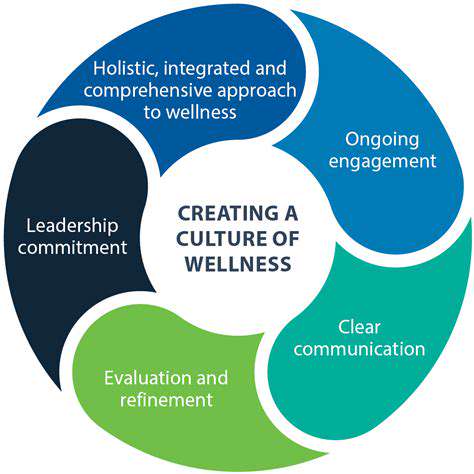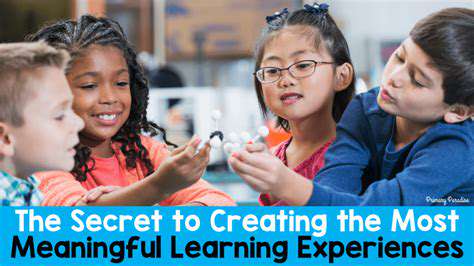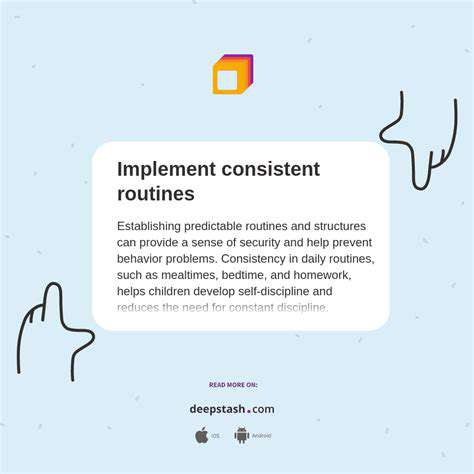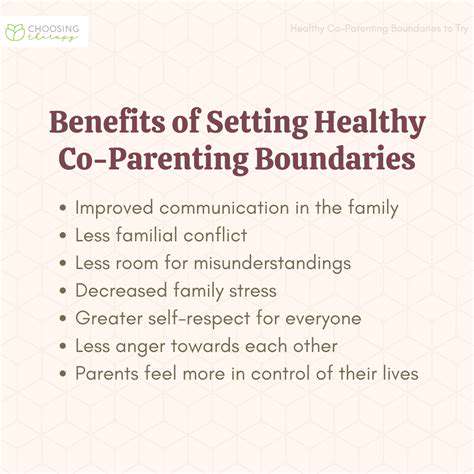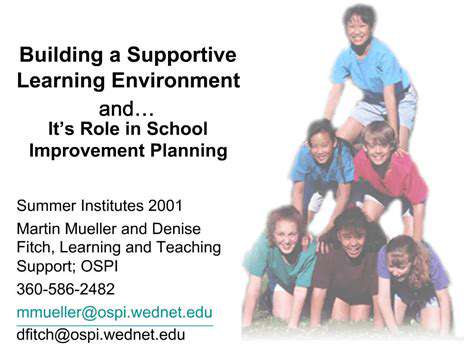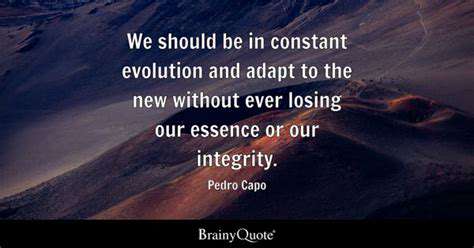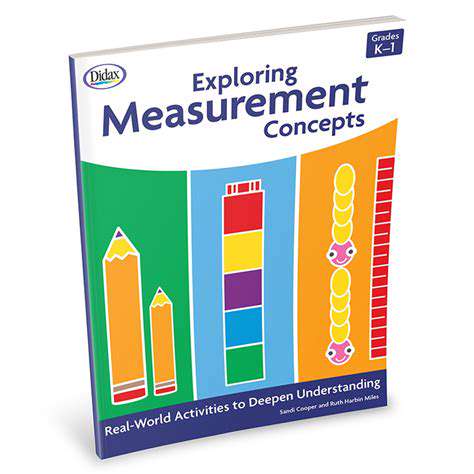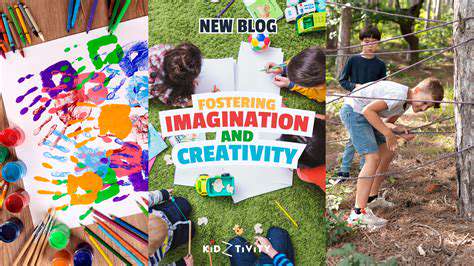Fostering a Love for Nature: Connecting Kids with the Outdoors
Igniting the Spark: Why Early Exposure Matters
Early exposure to nature, whether in a bustling city park or a tranquil woodland, plays a crucial role in fostering a lifelong appreciation for the natural world. Young minds are naturally curious, eager to explore and understand their surroundings. By providing opportunities for interaction with nature, we can nurture this innate curiosity and lay the foundation for a deeper connection with the environment throughout their lives. This isn't just about passive observation; it's about active engagement, encouraging exploration, and sparking a genuine fascination.
Experiences like nature walks, gardening, or simply spending time observing insects and birds can unlock a world of wonder. The sights, sounds, and smells of nature provide a rich tapestry of sensory experiences that stimulate the imagination and encourage critical thinking. These experiences can be transformative, inspiring a love for learning that extends beyond the confines of the classroom.
Cultivating a Connection: The Emotional Benefits
Spending time in nature fosters a sense of calm and well-being. The tranquility of a forest, the vibrant colours of a meadow, or the soothing rhythm of a stream can have a profound impact on emotional development. This connection with nature can help children develop emotional intelligence, empathy, and a sense of responsibility towards the environment.
Nature provides a sanctuary, a place to escape the pressures of daily life and reconnect with their inner selves. It allows for quiet reflection, fostering creativity and imagination. This connection to nature can be invaluable in building resilience and coping mechanisms, especially during periods of stress.
Enhancing Cognitive Development: Nature's Educational Power
Exposure to nature provides a wealth of learning opportunities. Children can learn about ecosystems, biodiversity, and the interconnectedness of life through direct observation and hands-on exploration. From identifying different species of birds to understanding the life cycle of a butterfly, nature provides a dynamic and engaging learning environment.
This hands-on learning approach can make abstract concepts more tangible and accessible. Nature provides a concrete context for learning, making it more memorable and meaningful for children. The exploration of nature also encourages problem-solving skills and critical thinking abilities.
Developing Environmental Stewardship: Responsibility and Respect
Exposure to nature instills a sense of responsibility and respect for the environment. Children who spend time in nature are more likely to develop an understanding of the importance of conservation and sustainability. Seeing firsthand the fragility and beauty of natural ecosystems can inspire a desire to protect and preserve them.
Through experiences like planting trees, cleaning up local parks, or participating in conservation projects, children can develop a strong sense of environmental stewardship. This is crucial for creating a future generation that is aware of the importance of protecting our planet and acting as responsible citizens.
Inspiring Creativity and Imagination: Nature's Muse
Nature serves as an endless source of inspiration for creativity and imagination. The intricate patterns in a leaf, the vibrant colours of a sunset, or the unique shapes of rocks can spark ideas and fuel artistic expression. Whether it's drawing, painting, writing, or simply observing, nature offers a rich tapestry of inspiration for children of all ages.
Imaginative play in natural settings allows children to explore their creativity in a unique way. The possibilities are endless, from building elaborate forts in the woods to creating fantastical stories inspired by the wonders of nature. This connection to nature can foster a lifelong love of creativity and artistic expression.
Promoting Physical Health: Nature's Healing Power
Spending time outdoors fosters physical health and well-being. Active participation in nature-based activities such as hiking, biking, or playing in parks promotes physical activity and encourages a healthy lifestyle. The fresh air, sunshine, and physical exertion contribute to overall well-being and can reduce stress levels.
Exposure to nature can also enhance Vitamin D levels through sunlight exposure, which is crucial for bone health and overall well-being. The natural environment provides a refreshing break from the indoors, promoting relaxation and rejuvenation, and contributing to a healthier and happier lifestyle for children.
Cultivating a Sense of Wonder: Exploring Nature's Mysteries

Cultivating a Child's Imagination
Nurturing a sense of wonder in children is crucial for their overall development and future well-being. Encouraging curiosity and exploration from a young age allows children to develop critical thinking skills and a lifelong love of learning. This exploration can take many forms, from engaging in imaginative play to venturing into the natural world and discovering the beauty of the unknown.
Providing opportunities for children to ask questions, experiment, and discover answers on their own is essential. Offering open-ended play and minimizing pre-structured activities can foster creativity and a sense of self-discovery. This approach allows children to develop a strong foundation for intellectual curiosity, which will benefit them in school and beyond.
Exploring the Natural World
Connecting children with nature is a powerful way to cultivate a sense of wonder. Taking them on nature walks, visiting parks, or simply spending time outdoors allows them to appreciate the beauty and complexity of the natural world. Observing birds, identifying flowers, or listening to the sounds of the forest can spark curiosity and a deeper understanding of the environment around them.
Encouraging children to engage in activities that allow them to interact with nature, such as gardening, building birdhouses, or collecting leaves, can deepen their appreciation of the natural world. These experiences can foster a sense of responsibility and stewardship towards the environment, which is essential for future generations.
Encouraging Creative Expression
Creative expression is a vital avenue for cultivating wonder. Providing opportunities for children to engage in art, music, and storytelling allows them to explore their inner world and express their unique perspectives. Whether through painting, drawing, playing an instrument, or writing stories, creative outlets give children a voice and a way to connect with their emotions and imagination.
Encouraging experimentation and embracing mistakes in creative pursuits is crucial. Allowing children the freedom to explore different forms of expression without judgment or pressure fosters confidence and self-esteem, which are essential for lifelong learning and creativity.
The Power of Storytelling
Stories have the remarkable power to transport children to different worlds, fostering a sense of wonder and imagination. Sharing stories, whether through books, myths, or personal anecdotes, opens up a world of possibilities for children and encourages them to think creatively and critically. Exposure to diverse and compelling stories can broaden children's perspectives and help them understand different cultures and experiences.
Reading aloud to children, or encouraging them to create their own stories, can be incredibly powerful. This shared experience strengthens the bond between parents and children while nurturing a love for language and imagination. It can also cultivate a deeper appreciation for the power of storytelling in shaping perspectives and understanding the world around them.
Maintaining the Momentum: Sustaining the Love for the Outdoors
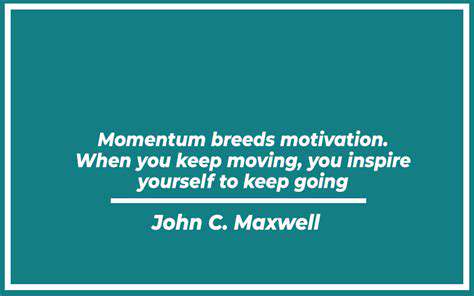
Sustaining Momentum in a Changing Landscape
Maintaining momentum is crucial for success in any endeavor, especially in today's rapidly evolving business environment. Adapting to change while continuing to move forward requires a strategic approach. It involves not just pushing forward, but also proactively anticipating and responding to emerging trends and challenges.
Defining Clear Goals and Objectives
A critical component of maintaining momentum is having clearly defined goals and objectives. These provide a roadmap for action and help to ensure that efforts are aligned with overall strategic direction. Vague or poorly defined goals can lead to wasted effort and a lack of progress. Concrete, measurable, achievable goals provide a framework for tracking progress and making necessary adjustments.
Building a Strong Team and Culture
A high-performing team is essential for sustained momentum. This involves fostering a positive and supportive work environment, encouraging collaboration, and empowering individuals to contribute their best work. Strong teamwork and a positive work culture are critical to navigating challenges and capitalizing on opportunities.
Investing in training and development opportunities for team members can also enhance their skills and knowledge, boosting their confidence and productivity. This leads to a more engaged and motivated workforce, enabling the team to continue driving progress.
Embracing Continuous Learning and Improvement
In today's dynamic environment, continuous learning and improvement are essential to maintaining momentum. This includes staying abreast of industry trends, seeking out new knowledge and skills, and constantly evaluating and refining processes. Companies that prioritize continuous improvement are better positioned to adapt to change and maintain a competitive edge.
This approach ensures that the team possesses the knowledge and skills necessary to tackle new challenges and capitalize on emerging opportunities. Regular feedback loops and a culture of experimentation are vital elements of this process.
Leveraging Technology and Innovation
Technology plays a significant role in maintaining momentum, providing new tools and opportunities for streamlining processes, enhancing communication, and expanding market reach. Implementing innovative solutions can dramatically improve efficiency and productivity.
Embracing new technologies and exploring innovative approaches can create new avenues for growth and success. This involves staying informed about emerging technologies and assessing how they can be applied to optimize existing processes.
Cultivating a Growth Mindset
A growth mindset is vital for sustaining momentum. This involves embracing challenges, viewing setbacks as learning opportunities, and persistently seeking improvement. A growth mindset fosters resilience and adaptability, enabling individuals and teams to overcome obstacles and achieve their goals.
